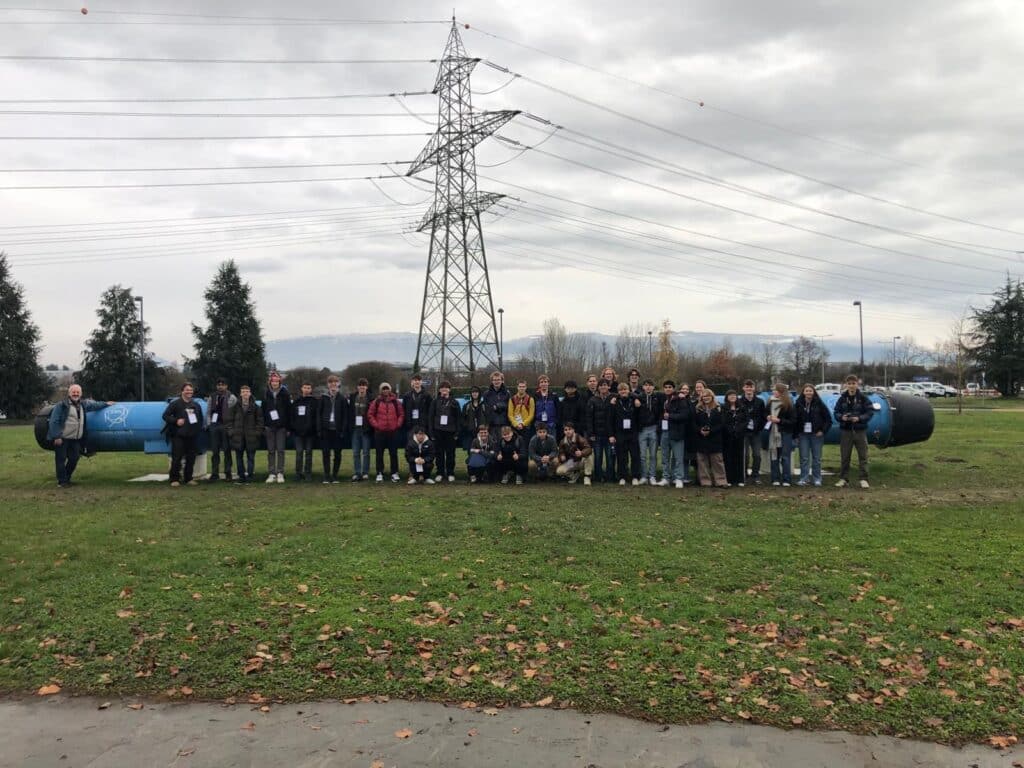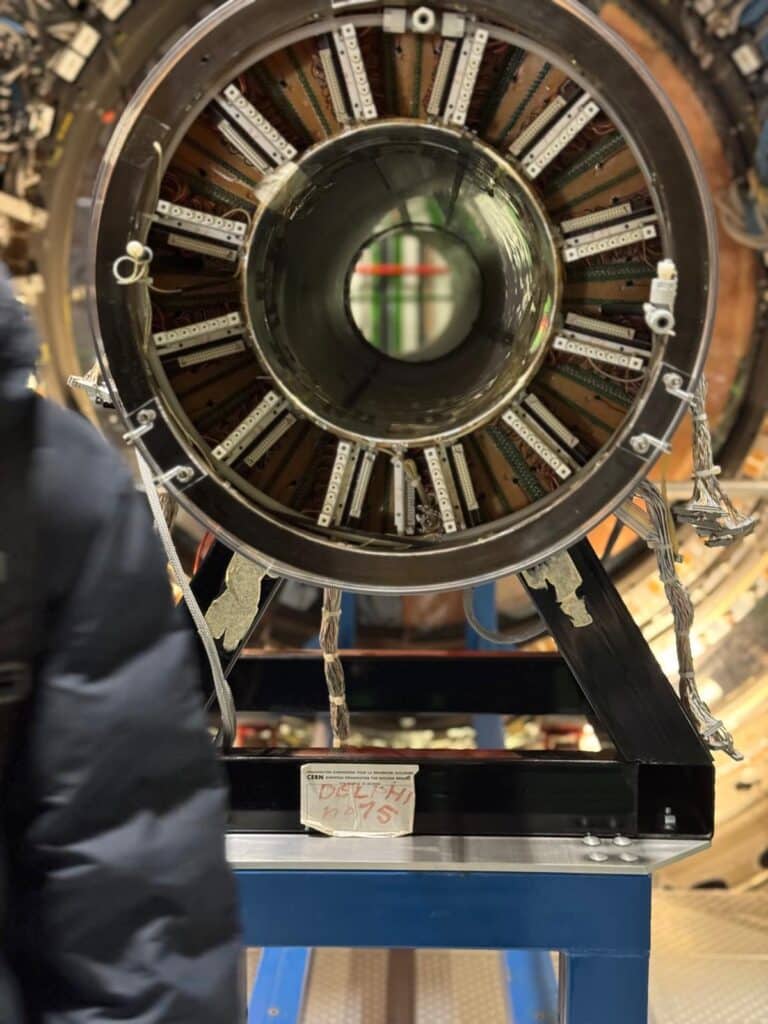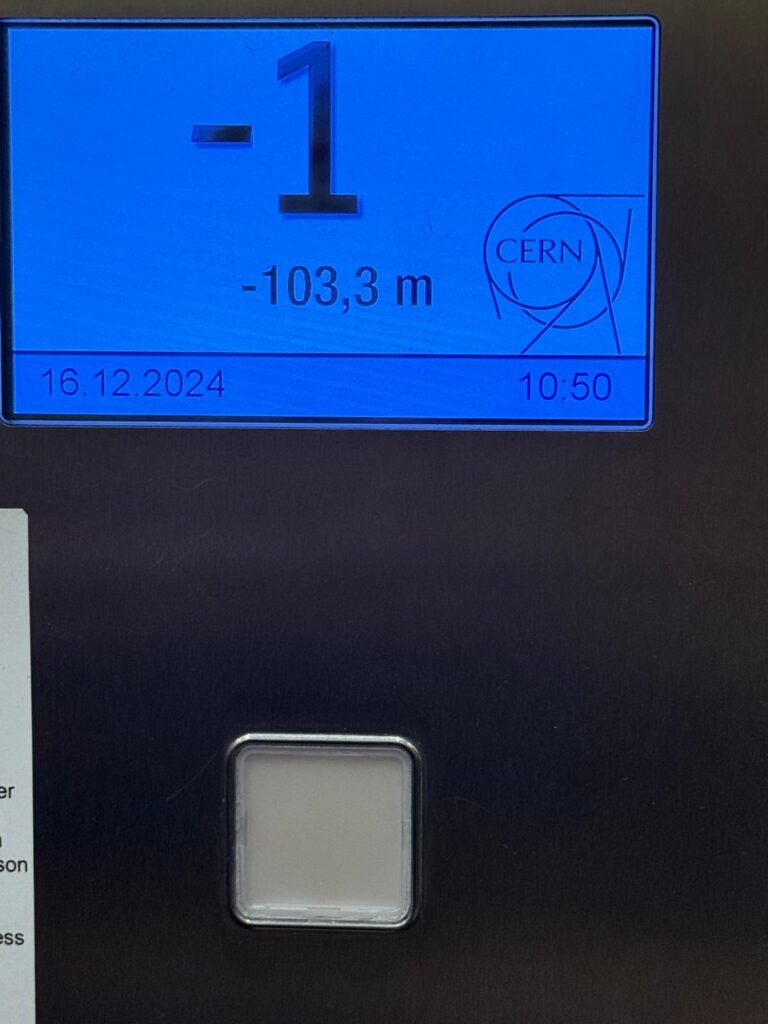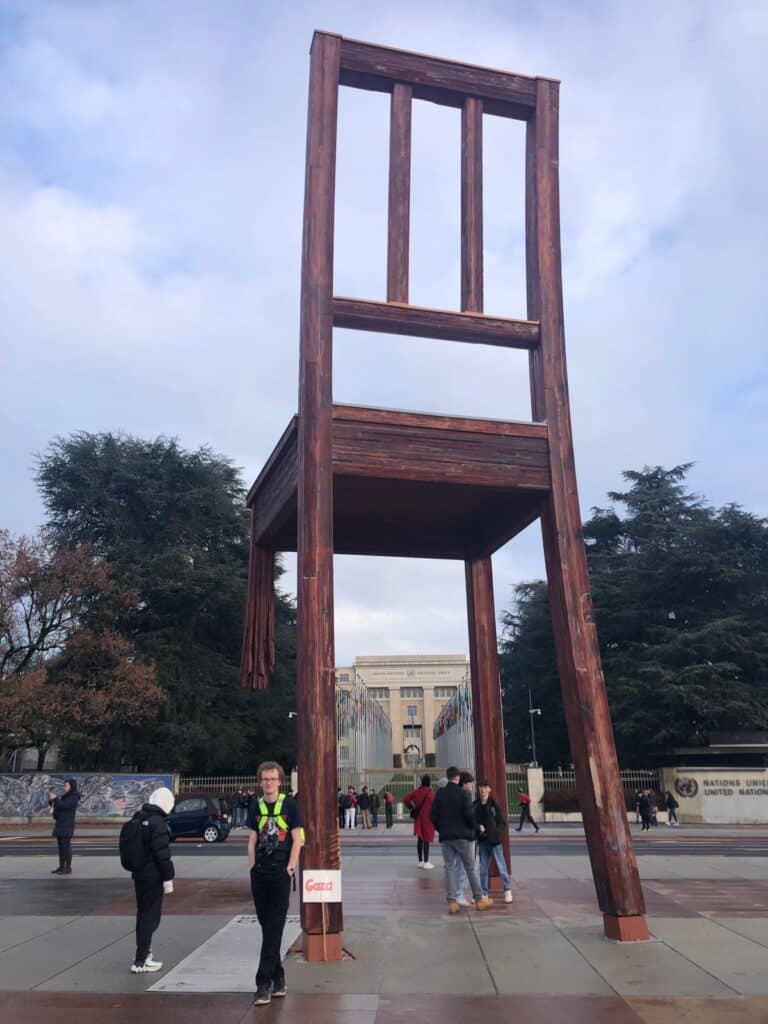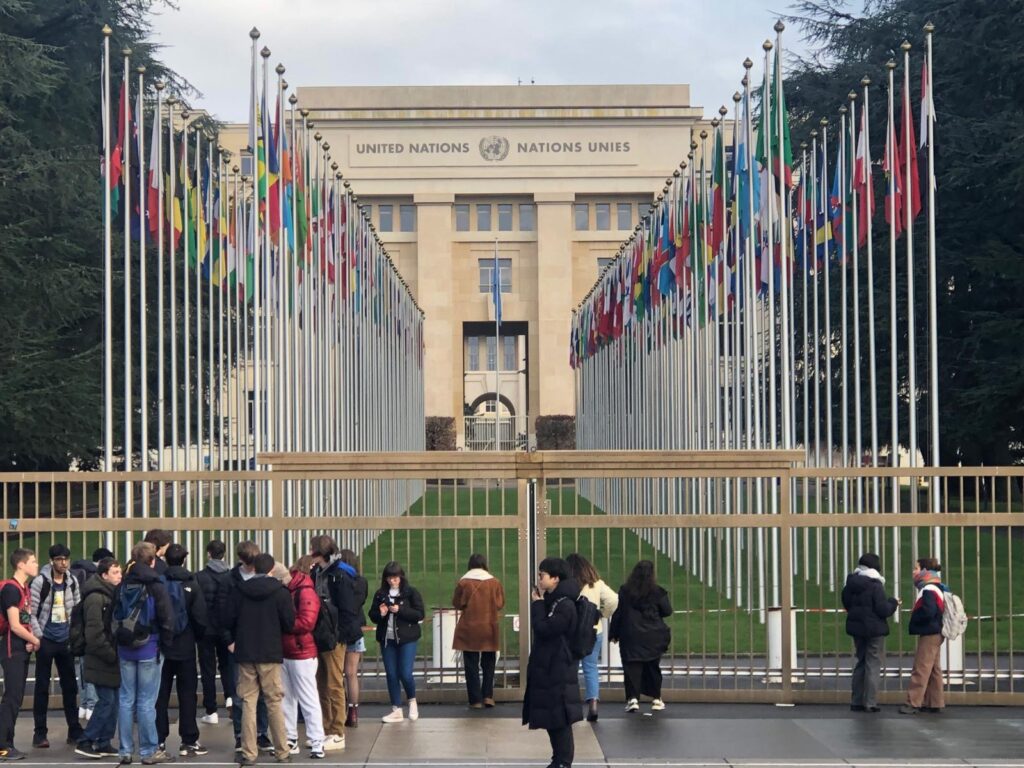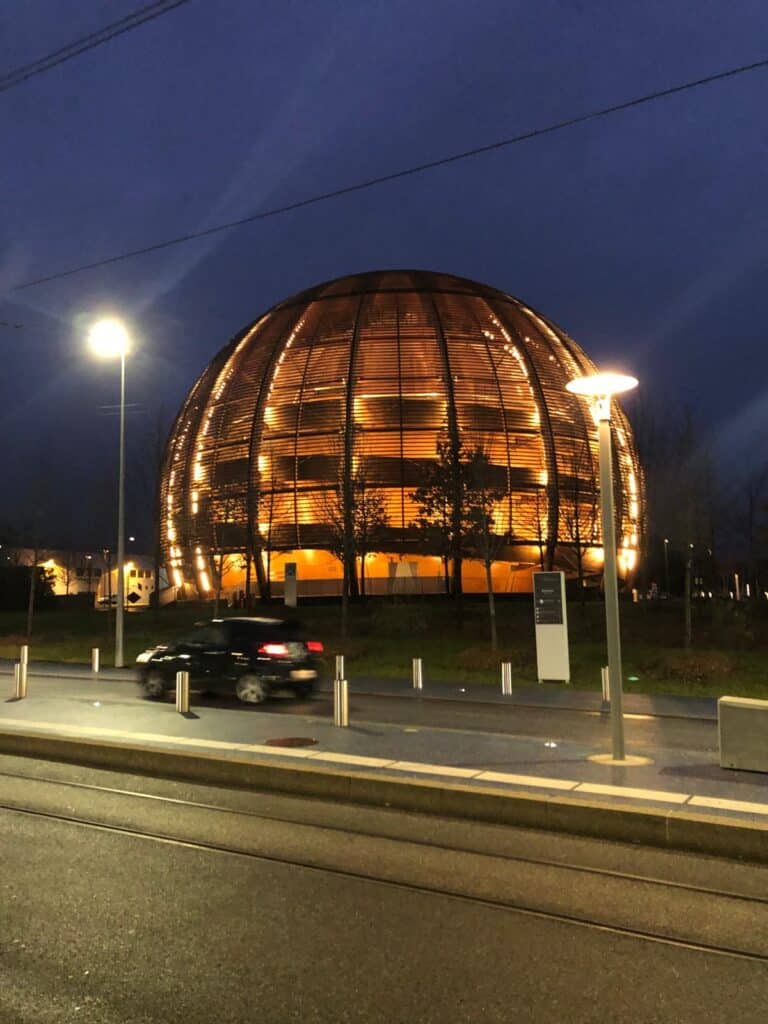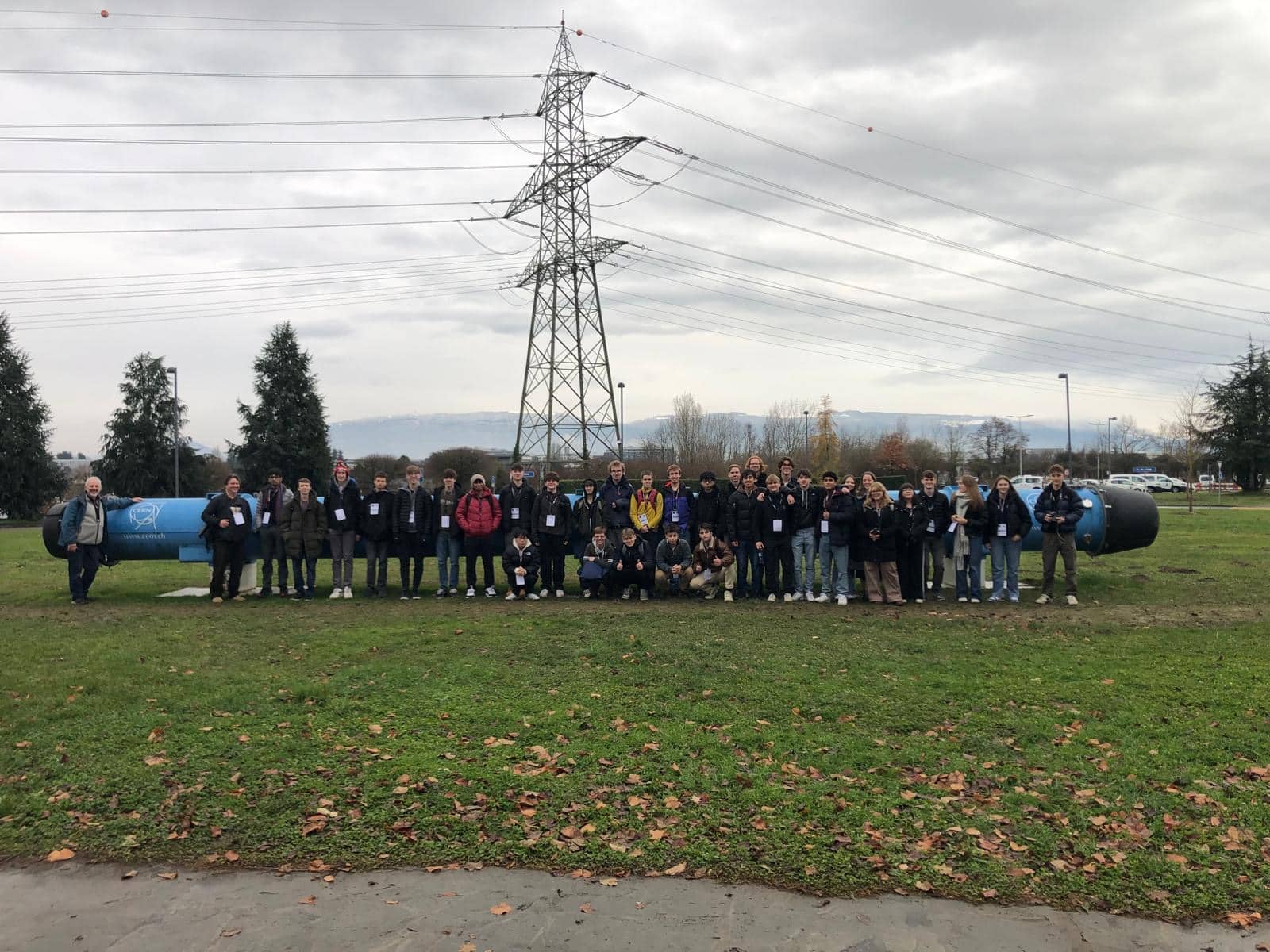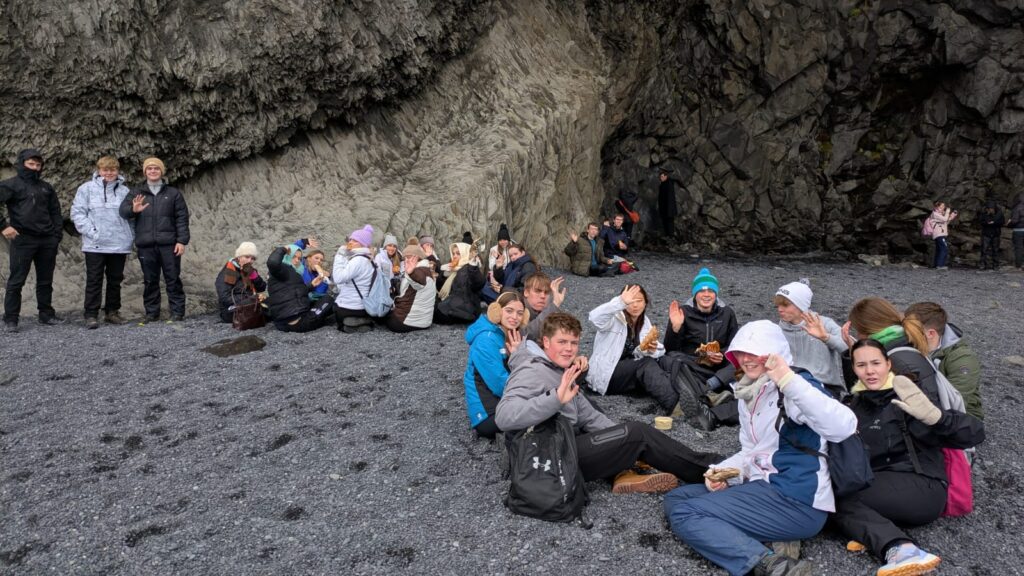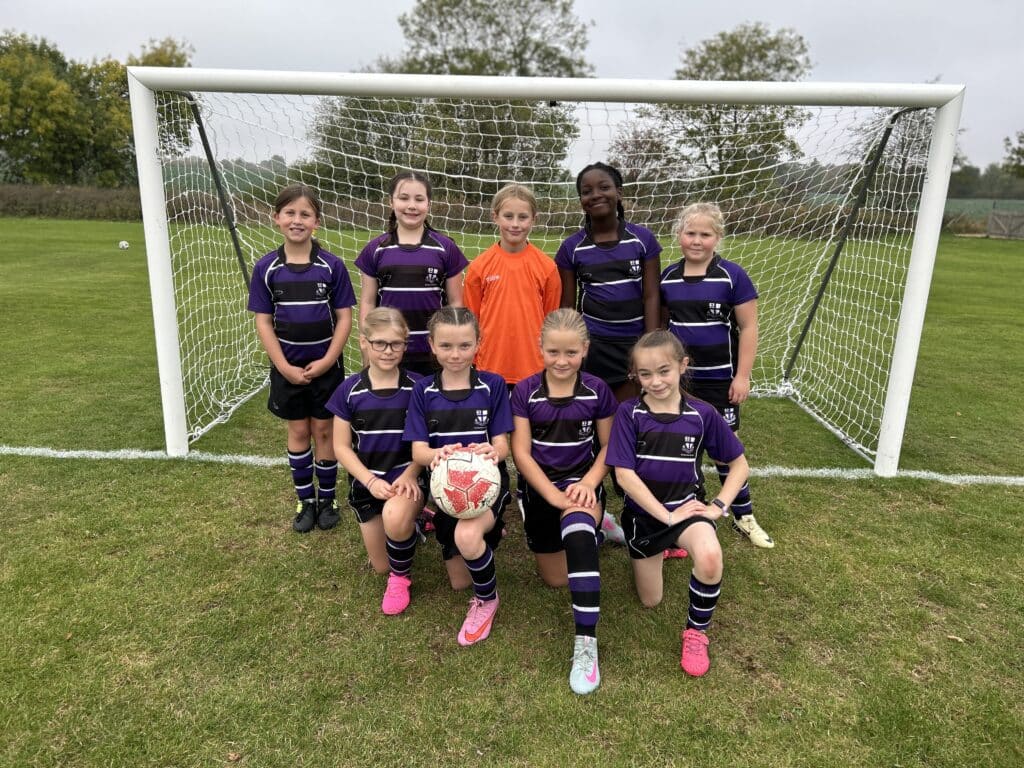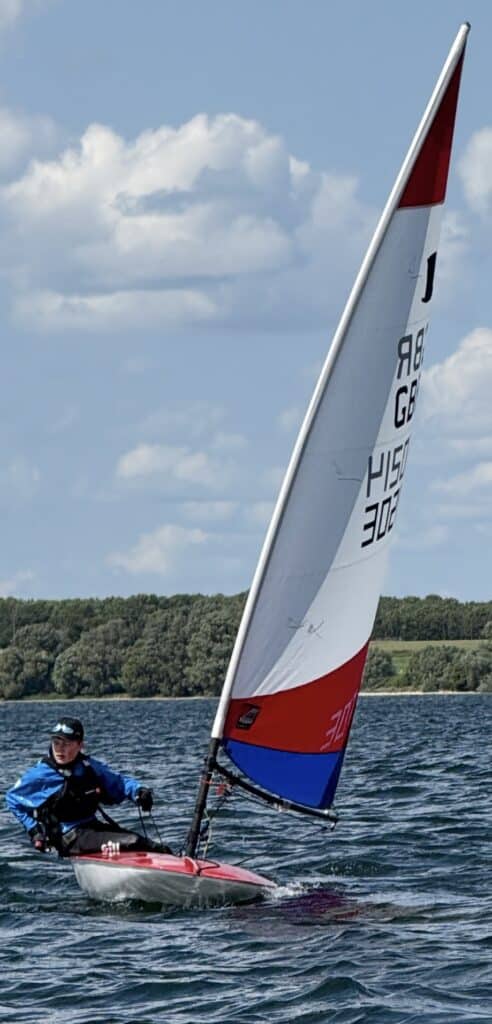Article by Aarush R. and Matthew G.
On 13 December, nearly 40 sixth-form students left Kimbolton at 7:30 am to catch a flight from Luton to Geneva, Switzerland. As the home of the Conseil Européen pour la Recherche Nucléaire (CERN) facility, Geneva offered us STEM students the opportunity to learn how humanity studies the sub-atomic world to understand gravity and the universe’s beginnings. However, our appreciation for Switzerland’s history over the weekend was also deepened through various other excursions.
After admiring the snowy Swiss Alps from above, we landed 2 hours later at Geneva airport and used the city’s modern tram system to reach our hotel. We checked in, settled down and had our evening meal for the day. As night arrived, we departed for our first activity: to explore the colourful Christmas markets in central Geneva, which overlooked Lake Léman reflecting the Christmas lights. Some of us enjoyed fresh crepes, while others were busy gift shopping. It was indeed a warm start to our trip.
The next day, we went back to central Geneva to view it in a different light. We were treated to a guided walking tour around the city, led by a friendly local. She explained the city’s history, pastimes and traditions to us. In fact, our trip coincided with the annual festival, Fête de l’Escalade, held each December, commemorating the defeat of an attempt to conquer the Protestant city-state by the Catholic Duchy of Savoy in 1602. As we walked around, we viewed the preparation for the parade that was to come. The tour ended at the famous St Peters Cathedral, where we stopped for lunch.
At last, we travelled to CERN. CERN is a collaboration between 24 member states that was established after WWII to unify Europe and re-establish it as a global centre for scientific research. The Large Hadron Collider (LHC), a 21km circular tunnel, accelerates particles to an astonishing 99.99% of the speed of light. There are two Streams of protons travelling in opposite directions, travelling around the loop 21000 times a second, and colliding with each other in 4 places (the experiments). Firstly, we visited the museum. Our physicists learnt from the history of the facility’s creation to the breakthrough physics that led to the discovery of the Higgs-boson particle. After a lecture on superconducting magnets, we got the feel of the place and wet our appetites on the interactive exhibits.
That evening, we were granted the occasion of watching a thrilling ice hockey match between 2 local teams. After cheering the goals scored, it was our turn to take to the ice. We put on our skates, and some of us for the first time, stepped onto the rink. Though many of us initially fell, we eventually got the hang of it and had a fantastic time.
Geneva is also home to the United Nations, and so the next day, we visited the UN. Unfortunately, we could not see the inside due to reconstruction, but we were able to visit the Red Cross museum, as the organisation was founded in Geneva. We learnt about the organisation’s history and were reminded of the vital importance of volunteering during international emergencies. From the Red cross we went back to CERN on the tram, by now feeling like experienced public transport users, and visited the Synchrocyclotron, CERN’s first particle accelerator, and the ATLAS experiment area, and learned more about the history of colliders.
On the last day we were taken to the LHCb Experiment. Our guides, four PhD students, gave us helmets and led us into an elevator descending 104 meters underground to the LHCb experiment. In advance fof the trip the guides had completed the courses necessary to take visitors into the highly sensitive area; we were all aware how lucky we were to be among the few to visit the site where literally tons of machinery awaited us, revealing the intricacies of technology used to study collision debris, which could even shed light on dark matter. We even got a tour of the actual control centre, where the collisions were detected.
The trip was an amazing opportunity to indulge into particle physics, modern research/engineering and the rich culture and history in Geneva. The CERN site and its tours were amazing opportunities to see the site in more detail and learn more about what they do. I learnt a lot and we made the most of the opportunities by listening and asking questions of the tour guides and Phd students. The downtime was extremely well balanced and the evenings were great fun to enjoy ourselves and explore Geneva. The walking tour and Museum were very interesting and it was great to learn more about a rich culture. I highly encourage other students to take advantage of opportunities like this, and we are deeply grateful to the teachers who made this trip possible.
